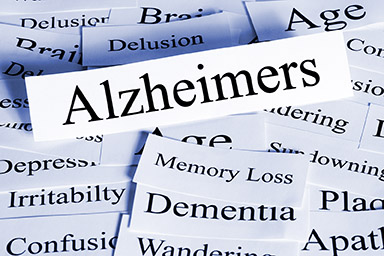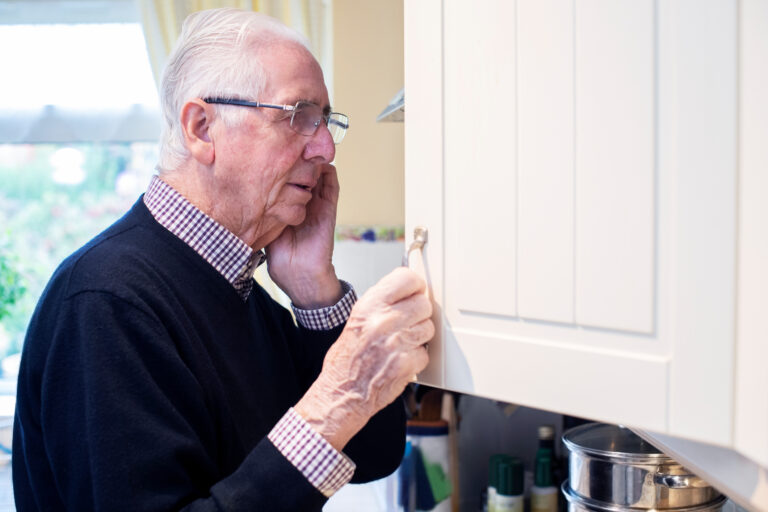As our loved ones approach their final days, we all hope they feel a sense of peace. But if we see them looking distressed, confused, and agitated, it can be very painful and difficult to watch.
Terminal restlessness, also known as terminal agitation, is quite common, but that makes it no less upsetting. Fortunately, there are treatments to ease terminal restlessness, and ways to support your loved one as they reach the end of their life. Read on to learn more about the signs of terminal agitation, what causes it, and how hospice care can help your whole family cope.
Are you or a loved one living with a chronic or terminal illness?
The Sage Family of Companies is here to help.
Are you or a loved one living with achronic or terminal illness?
The Sage Family of Companies is here to help.
What Is Terminal Agitation?
Terminal agitation, or restlessness, is a condition marked by agitation, confusion, and emotional distress during the last few days or hours of life. These changes in mental and emotional state are typically uncharacteristic and sudden. Terminal agitation may subside on its own or with treatment.
If your loved one is experiencing terminal agitation or restlessness, they may behave erratically, experience extreme mood swings, and speak nonsensical words. They might also appear lethargic, docile, and not remember who you are.
Seeing these changes in a loved one can be deeply upsetting for family members and caregivers. You may feel frustrated or even hurt, particularly if your loved one appears to be lashing out at you. This is completely normal and understandable, but try not to take it personally and become agitated yourself. Remember, it’s not your loved one’s fault that they are experiencing these things.
Signs of Terminal Agitation
Terminal agitation can look different in everyone, but there’s a general set of common symptoms to look out for. Signs and symptoms of terminal restlessness or agitation include:
- Personality changes or mood swings
- Confusion and disorientation
- Not recognizing family members or where they are
- Moaning, shouting, or crying out
- Irritability
- Acting paranoid or suspicious
- Mumbling or speaking words that don’t make sense
- Grimacing or frowning
- Hallucinations
- Talking to someone who’s not there or people who are no longer alive
- Trying to undress themselves or constantly picking at clothes or bed sheets
- Refusing care
- Not sleeping
- Using uncharacteristically foul language, insults, or hostile words
- Tossing, kicking, and squirming in bed
- Rejecting touch or physical affection

Causes of Terminal Agitation
Terminal agitation or restlessness may not necessarily have a specific cause in your loved one. Still, there are some factors and conditions that may occur during the dying process that can contribute to terminal delirium, such as:
- Certain pain medications, such as opioids, steroids, and other painkillers that can cause delirium in some people
- Organ failure, which impacts how the body carries out its normal functions and may affect brain chemistry
- Chemotherapy drugs, which kill cancer cells, but can take a major toll on the body, leading to agitation or restlessness as a patient approaches the end of life
- Infections, which can cause fever and dehydration, which in turn can alter mental state
- Emotional distress or grief from dying
Terminal Agitation Treatment
How terminal restlessness is managed will vary from person to person and depends on the underlying cause. Treatments for terminal restlessness or agitation include:
- Switching prescription medications or dosage to lessen side effects or reduce pain and discomfort
- Speaking with a provider who is experienced at helping others cope with grief at the end-of-life, such as a bereavement counselor or hospice social worker
- Meeting with a chaplain or other faith leader for spiritual guidance
- Medications, such as antipsychotics and morphine, which can help ease terminal agitation or restlessness
How to Help a Loved One With Terminal Agitation or Restlessness
While preparing for a loved one’s end of life is never easy, it can be even more upsetting if they’re experiencing terminal agitation or restlessness. At times you may feel completely helpless and like you may not know what to do. But there are plenty of ways you can support your loved one at this difficult time. Some effective strategies include:
- Check for pain and other symptoms, such as fever and dehydration, and communicate new or worsening symptoms to your loved one’s provider.
- Try to make their breathing more comfortable by raising the head of their bed, adding another pillow, or adjusting their position.
- Regulate the temperature in the room and provide them with comfortable blankets, cool washcloths, and fans depending on whether they need extra warmth or to cool down.
- Prevent bedsores by moving your loved one in bed every few hours.
- Keep tasks like dressing, grooming, and using the bathroom as simple as possible to prevent frustrations.
- Encourage visits or phone calls with family members and friends.
- Suggest a visit from a religious leader, particularly if faith has played a role in your loved one’s life.
- Simply sit with your loved one and spend some quality time with them either by talking, watching their favorite movie or television show, listening to music, or holding their hand. Sometimes, just being in the company of others can help bring a sense of calm.
How Hospice Care Can Help
If your loved one is experiencing terminal restlessness or agitation, hospice care can help. The Sage Family of Companies offers highly skilled teams of trained, experienced professionals who specialize in treating patients at the end of their life. Our teams are well versed in managing all of the difficult emotions and effects that come with the dying process, including terminal agitation.
Bereavement counselors, social workers, and other specialists are available to help both your loved one and your whole family cope with this challenging time as the end of life approaches. Medications such as morphine and antipsychotics can be administered in a safe and effective way to help manage your loved one’s terminal agitation or restlessness. If you feel your loved one would benefit from meeting with a chaplain or other spiritual leader, your hospice care team can help arrange this.
The Importance of Looking After Yourself as a Caregiver
Caring for a loved one with a terminal illness can be one of the most challenging times a family faces, and it can take a serious toll on caregivers. Feelings of sadness, anger, despair, and frustration are all completely normal. However, if you don’t have the proper support to process these feelings, your own health can suffer. And in order to be there for your loved one, you need to make sure you’re taking care of yourself.
Some strategies you might consider include:
- Take breaks and time for yourself throughout the day.
- Maintain a healthy diet, exercise, and regular sleep as often as you can.
- Remember that you don’t need to be the sole person responsible for caretaking. Ask for help from your family and friends when needed.
- Lean into your support system and call family and friends for support.
- Join a support group to connect with others who are also losing a loved one.
- Try relaxation techniques, such as meditation, breathing exercises, or progressive muscle relaxation.

Terminal Restlessness FAQ
Here are some frequently asked questions about terminal restlessness or agitation.
How Long Does Terminal Agitation Last Before Death?
Terminal restlessness typically occurs within the last few days of life. While every person is different, the agitation may resolve on its own or after interventions from your hospice team.
How Do You Know When Someone is Transitioning to Death?
When your loved one is transitioning to death, they’ll experience a number of bodily changes. Signs that a person is in their final days can include lack of appetite, sleeping more, withdrawing from others, and increased pain.
In the final hours of life, there’s usually a drop in blood pressure and body temperature, as well as an irregular heartbeat and breathing changes. Skin may also appear mottled and purple or blue in color.
Summary
Having a loved one enter their final days of life is never easy, but it can be even more upsetting when they’re experiencing terminal agitation or restlessness. You may have trouble being around them, particularly if they’re experiencing extreme personality changes or seem angry with you.
Remember that any hostility they express is not their fault. There are a number of resources that can help ease their agitation, and help your family cope with terminal restlessness, including hospice care.
The Sage Family of Companies is here to answer any questions you may have.






